Physical Address
304 North Cardinal St.
Dorchester Center, MA 02124
Physical Address
304 North Cardinal St.
Dorchester Center, MA 02124
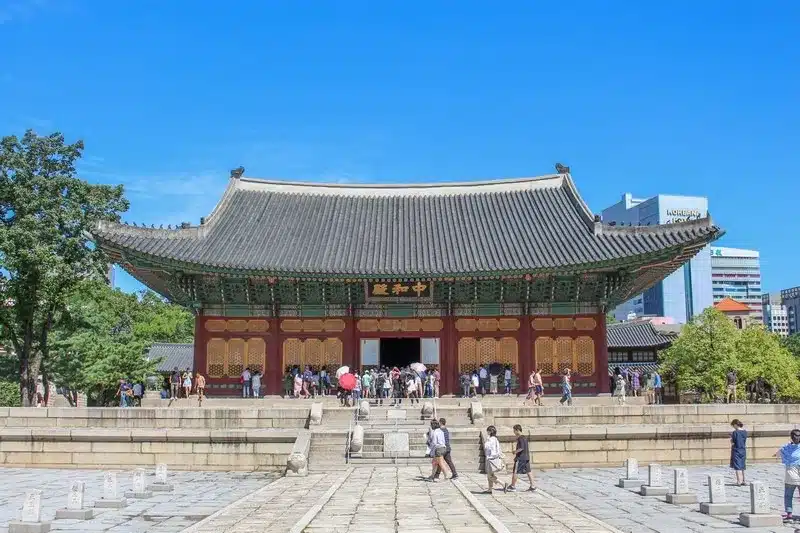
If you’re looking for a fascinating glimpse into Seoul’s rich history and culture, there’s no better way than to explore the city’s breathtaking palaces. From the grandeur of Gyeongbokgung Palace to the serene beauty of Changdeokgung Palace, these architectural wonders offer a unique window into Korea’s past. Whether you’re a history buff or simply seeking an adventure, a visit to Seoul’s palaces is sure to be an unforgettable experience.
As you wander through these ancient structures, you’ll marvel at their intricate design and ornate details. From intricately carved wooden doors to vibrant murals and stunning gardens, every inch of these palaces is steeped in history and tradition. You’ll learn about Korea’s royal dynasties and their cultural significance as you explore each palace’s many halls, pavilions, courtyards, and more. So come along on this journey with us as we delve deeper into each of Seoul’s magnificent palaces!
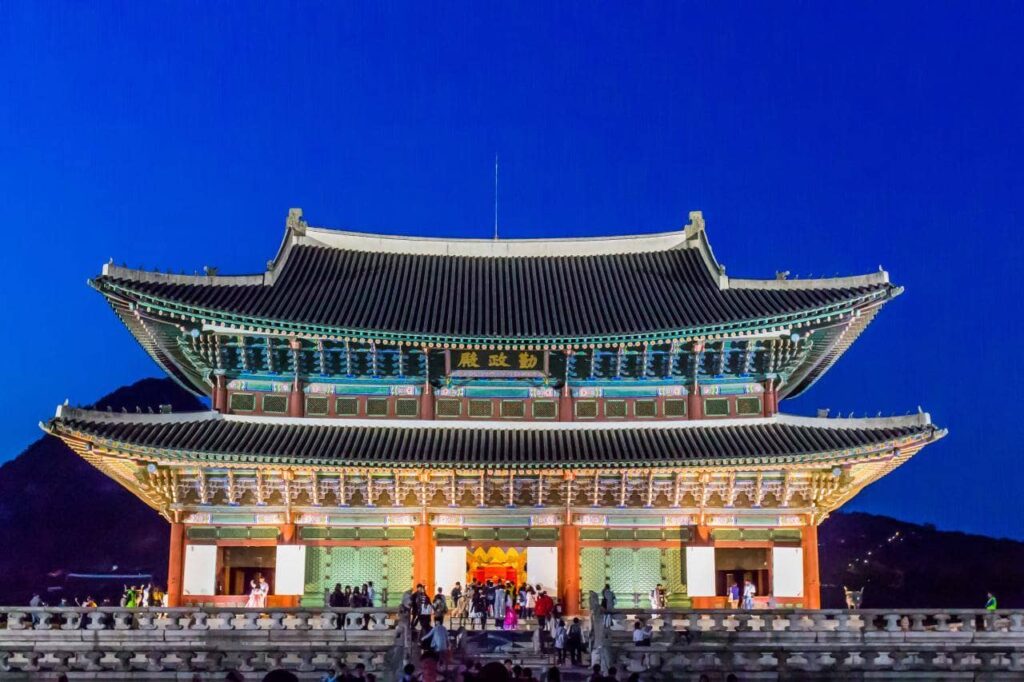
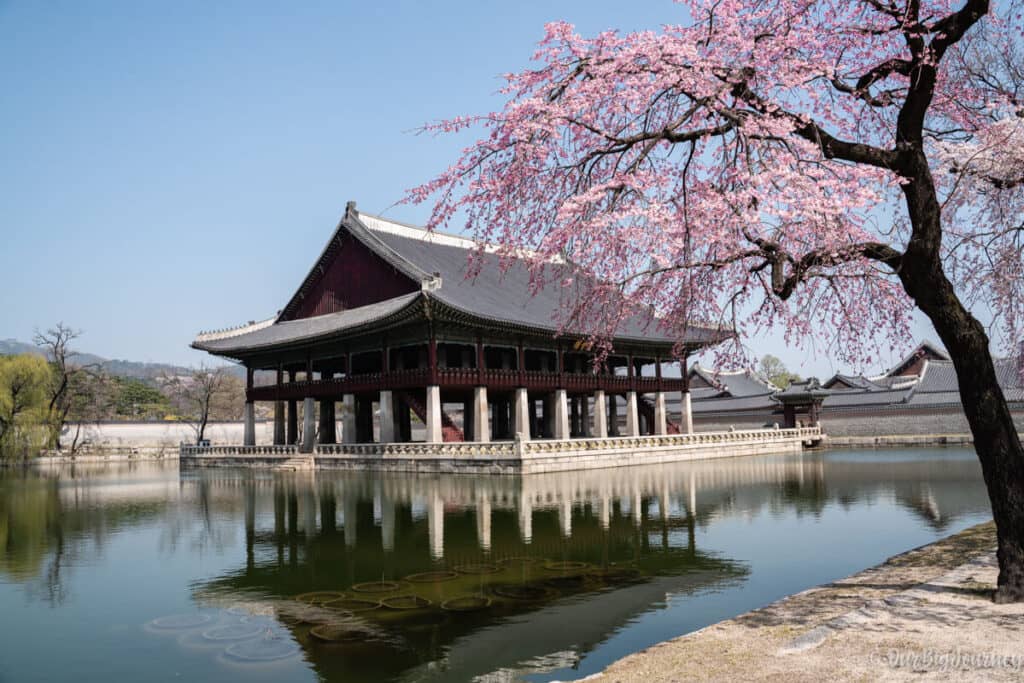
Let’s take a stroll through Gyeongbokgung Palace and soak in the grandeur of its majestic halls. Built in 1395, Gyeongbokgung is the largest of all five palaces in Seoul and was once the main royal palace during the Joseon dynasty. As you walk through its massive gates and into its expansive courtyards, you’ll be transported back to a time of opulent luxury and grandeur.
Built in 1395 under the guidance of King Taejo, the first ruler of the Joseon Dynasty, Gyeongbokgung Palace served as a symbol of supreme power and the new dynasty’s embrace of Neo-Confucian principles. Despite suffering extensive damage during the Japanese invasions of Korea in the late 16th century, the palace underwent several reconstructions over the centuries. Its meticulous restoration efforts began in the late 19th century, reflecting Korea’s commitment to preserving its cultural heritage. Today, visiting Gyeongbokgung is like stepping back into a vibrant history of royal ceremonies and governmental functions.
One of the most impressive features of Gyeongbokgung is its throne hall, Geunjeongjeon. This hall was where kings held important ceremonies and received foreign envoys. Its size alone is awe-inspiring, with 28 pillars holding up a roof that stretches over 100 feet wide. The intricate decorations on every surface are an incredible display of Korean craftsmanship.
As you explore Gyeongbokgung Palace further, make sure to visit some of its other notable structures like the beautiful Gyeonghoeru Pavilion or the serene Hyangwonjeong Pavilion. With so much to see and experience here, it’s no wonder why this palace is one of Seoul’s top attractions for visitors from around the world.
Transition: Now that we’ve taken in all that Gyeongbokgung has to offer, let’s move on to our next stop on this journey through Seoul’s palaces – Changdeokgung Palace.
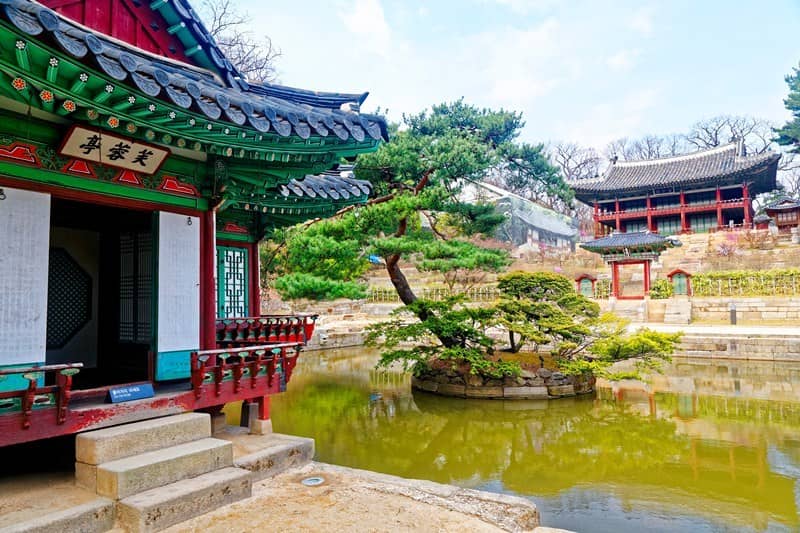
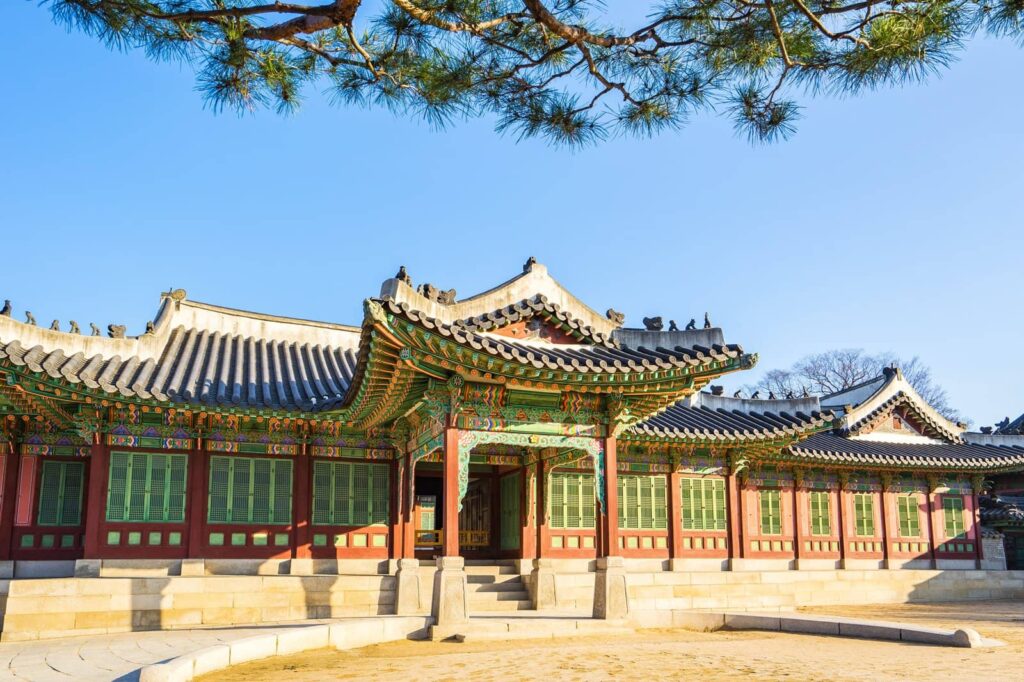
You’ll be amazed by the beauty of Changdeokgung Palace, a UNESCO World Heritage Site in Seoul. This palace is known for its harmonious blend of traditional Korean architecture and natural surroundings. In fact, it’s often referred to as the “Palace of Nature” due to its stunning gardens that change with each season.
One of the most notable features of Changdeokgung Palace is its Secret Garden, which was once exclusive to royal family members and their guests. The garden spans over 78 acres and is home to numerous pavilions, ponds, and even a small stream. It’s a peaceful oasis in the heart of bustling Seoul, and visitors can take guided tours to learn more about its history.
The Secret Garden, or Huwon, is a masterpiece of landscaping, skillfully blending nature with human artistry. Stretching over 78 acres, the garden features exquisite elements like Buyongji Pond, which is flanked by the Juhamnu Pavilion and an ancient library. The garden was designed to offer a secluded retreat for the royal family and is adorned with rare plant species, peaceful walking paths, and serene water features that change with the seasons. Each visit offers a fresh perspective, as the landscape shifts from the vibrant greens of summer to the warm hues of autumn.
Changdeokgung Palace also offers a glimpse into Korea’s past through various structures such as Seonjeongjeon Hall where royal meetings were held, Injeongjeon Hall where coronations took place, and Nakseonjae Residence where royal family members lived.
All these buildings are well-preserved and reflect the elegance and sophistication of traditional Korean culture. After exploring Changdeokgung Palace, you’ll have a deeper appreciation for Korea’s rich history and cultural heritage.
As you move on to explore Changgyeonggung Palace located nearby, you’ll notice some similarities in architecture but also distinct differences that showcase different periods in Korean history.
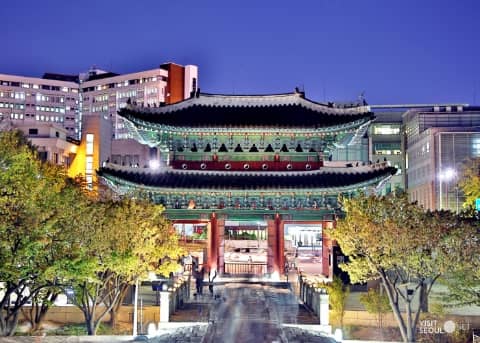

As you enter Changgyeonggung Palace, don’t miss the chance to see the unique blend of Chinese and Korean architectural styles that make it stand out from other palaces in the city. This palace was built in the 15th century as a pleasure garden for the royal family, and later became a secondary palace during times of war. Here are some things you can expect to see when visiting:
In addition to its beautiful architecture and natural surroundings, Changgyeonggung Palace also has an interesting history. During Japanese colonial rule in Korea, many of its buildings were destroyed or repurposed for other uses such as schools and offices. It wasn’t until the 1980s that restoration efforts began to bring back its original splendor.
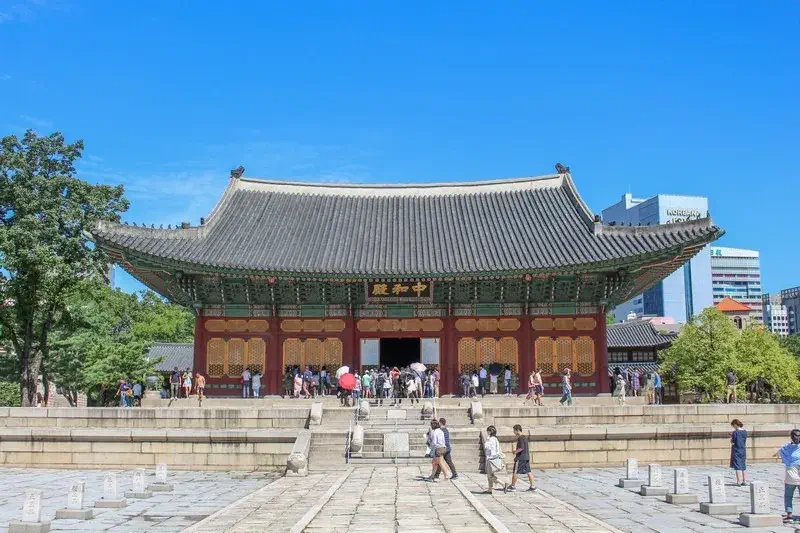
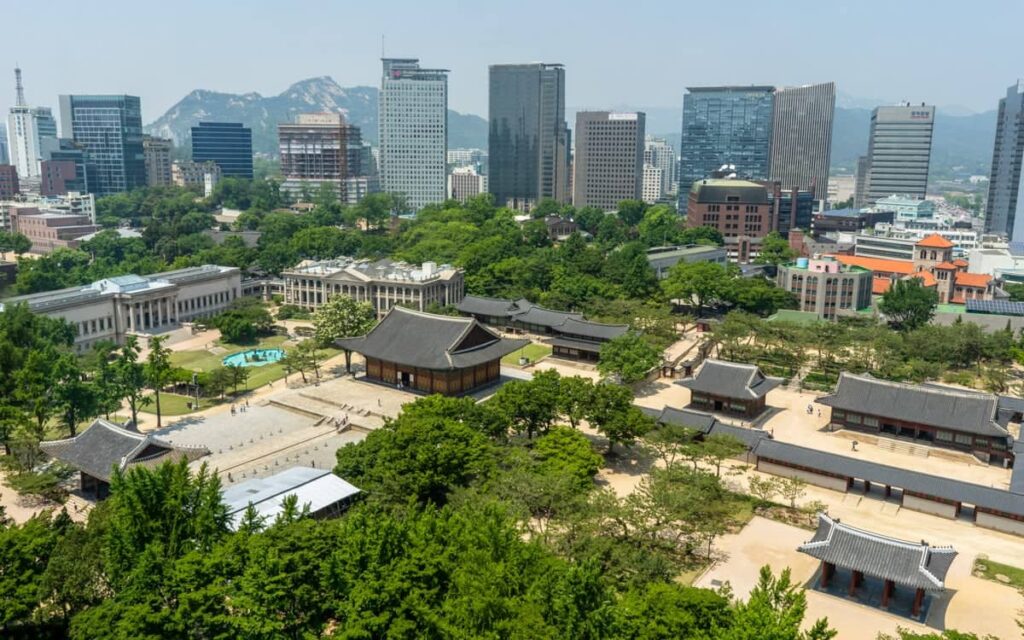
The fusion of Western and traditional Korean architecture at Deoksugung Palace creates a unique and captivating atmosphere that transports visitors to a different time period. The palace was first built in the 15th century, but it underwent major renovations during the late 19th century when Korea was opening up to the world. The addition of European-style buildings such as Seokjojeon Hall and Junghwajeon Hall makes Deoksugung stand out among other palaces in Seoul.
Aside from its architectural beauty, Deoksugung Palace also has cultural significance as it served as a temporary residence for various kings throughout history. Visitors can explore the king’s living quarters, known as Jeukjodang Hall, which features intricate wooden carvings and decorations. The palace also houses several museums such as the National Museum of Art and the Seoul Museum of History.
As you wander through Deoksugung Palace, take note of the contrasting elements between traditional Korean structures like Hamnyeongjeon Hall and modern additions like Daehanmun Gate. It’s fascinating to see how these two styles blend seamlessly together, creating an enchanting ambiance that captures both old-world charm and contemporary aesthetics.
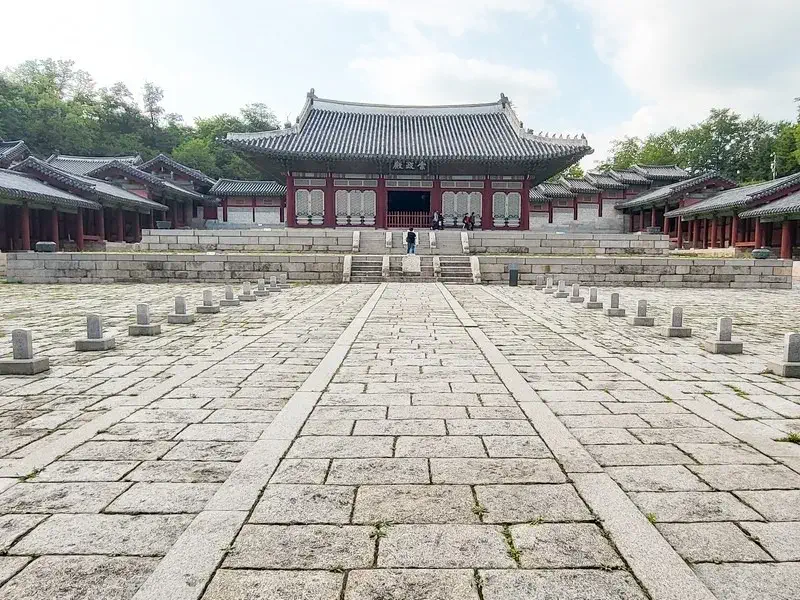
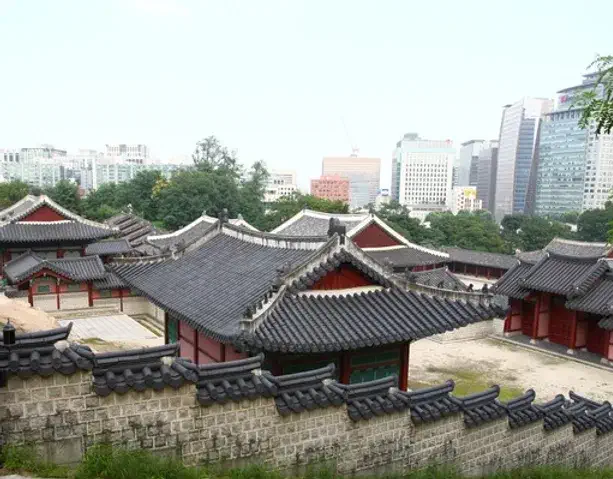
As you step into Gyeonghuigung Palace, you’ll discover that it was once used as a military training ground during the Joseon Dynasty. While exploring the palace grounds, keep an eye out for hidden gems such as the Secret Garden and the King’s Library. Thanks to restoration and preservation efforts, visitors can now experience firsthand the grandeur of this historic site and learn more about Korea’s rich cultural heritage.
You’ll be surprised to learn that the palace grounds were once used as a military training ground. During the Japanese colonial period, Gyeonghuigung Palace was transformed into a military camp and used for training soldiers. The palace buildings were converted into barracks, and the expansive gardens became parade grounds.
Despite its use as a military camp, many of the original structures remain intact today. Visitors can see remnants of the past such as bullet holes in some of the walls and gates that were added during this time period. It’s an interesting contrast to witness how this place of royalty and elegance could also serve as a site for such militaristic purposes. Now, let’s move onto exploring some hidden gems within the palace grounds.
The palaces of Seoul, including the grandeur of Gyeongbokgung, the serenity of Changdeokgung, and the historical richness of sites like Deoksugung and Changgyeonggung, are not just architectural marvels but are also a testament to the enduring legacy of Korea’s cultural heritage. These palaces, each with their unique stories and beauty, offer a window into the Joseon Dynasty’s opulent past and the evolution of Korean society.
Our exploration has shown how these palaces are more than just tourist destinations; they are vibrant cultural hubs where the past meets the present. Whether it’s through the changing of the guards at Gyeongbokgung or the tranquil gardens of Changdeokgung, these palaces allow us to experience the splendor of royal traditions and the intricate beauty of Korean architecture.
As we conclude our journey, we’re left with a deeper appreciation for Seoul’s royal residences, recognizing them as living monuments that continue to enchant, educate, and inspire. For those who have yet to experience these majestic palaces, a visit to Seoul offers a unique opportunity to immerse yourself in a rich tapestry of history and beauty. The palaces of Seoul are not just relics of the past; they are enduring symbols of Korea’s resilient and vibrant spirit.
The history behind the construction of these palaces dates back to the Joseon Dynasty, which ruled Korea from 1392 until 1910. The kings of this dynasty built five grand palaces in Seoul, each with its own unique architecture and layout. These palaces were not only used for royal residences but also served as venues for various ceremonies and events. They were designed to showcase the power and wealth of the Korean monarchy while also providing a sense of harmony with nature. The buildings within the palace complex were constructed using traditional Korean techniques such as wooden framework, brick walls, and tiled roofs. Today, these palaces are a popular destination for tourists interested in learning about Korean history and culture.
If you’re interested in ghost stories and legends, then you’ll be pleased to know that there are a few spooky tales associated with the palaces of Seoul. For example, it’s said that the Gyeongbokgung Palace is haunted by the ghosts of former kings and queens who died tragic deaths. Some people claim to have seen these spirits wandering around the palace at night, or heard their wailing cries echoing through its halls. Similarly, the Changdeokgung Palace is rumored to be home to a ghostly woman dressed in white who appears only on rainy days. While there’s no way to prove whether these stories are true or not, they certainly add an extra layer of intrigue to your visit!
If you’re planning on visiting the palaces in Seoul, it’s important to know the admission fees. The fee for each palace is 3,000 won (approximately $2.50 USD) for adults and 1,500 won (approximately $1.25 USD) for children. However, there are discounts available if you purchase a combination ticket or if you visit during certain times of the year. The combination ticket allows access to all five palaces and costs 10,000 won (approximately $8.50 USD) for adults and 5,000 won (approximately $4 USD) for children. There are also free admission days throughout the year such as January 20th (Sovereigns’ Day), May 18th (International Museum Day), and September 12th-13th (Korean Heritage Day). So be sure to plan your visit accordingly and take advantage of any discounts available!
Yes, visitors are encouraged to wear traditional Korean clothing while exploring the palaces. It not only adds to the experience but also provides a unique opportunity to immerse oneself in the culture and history of Korea. Many places offer rental services for hanbok (traditional Korean dress) and provide a wide range of styles for both men and women. Additionally, wearing hanbok can also grant you free entry into certain areas within the palace grounds or discounts on entrance fees. So why not embrace the chance to dress up in traditional Korean attire and fully embrace your visit to the palaces
Exploring these palaces will give you a glimpse into Korea’s rich history while admiring the beauty of their stunning architecture and landscapes. The experience will leave you feeling awestruck by how such ancient buildings can still stand tall today amidst modernization. So why not take on this adventure yourself? Go ahead; visit these historical sites when you next find yourself in Seoul – they’re sure to be an unforgettable part of your trip!